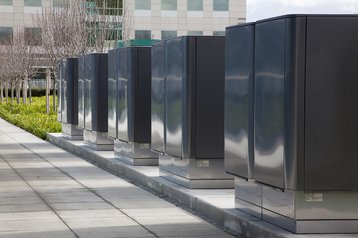Will be in the form of SOFC's and natural gas powered generators
AEP Ohio has had an application approved to install two onsite power generation units at data centers in the state.
According to a report, the Public Utilities Commission of Ohio (PUCO) voted to approve the projects, operated by Amazon Web Services (AWS) and Cologix. Exact details on the location of the data centers and capacity of the units were not disclosed.
Reports have indicated that the generation assets will comprise Solid Oxide Fuel Cells (SOFC) and natural gas-powered generators. The fuel cells are likely to be supplied by Bloom Energy, which signed a deal last year with AEP Ohio to deploy up to 1GW of SOFCs for data centers. AEP placed an initial order for 100MW of cells, with an expansion order expected in 2025.
AEP Ohio and the data center operators will pay for the power generation assets. AWS has signed on to a six-year contract, and Cologix has committed to a 15-year deal.
AEP Ohio has redacted all financial terms, with PUCO granting the order under a rule that allows companies not to disclose information to protect trade secrets.
In a statement earlier this year reflecting on the Bloom deal, the utility said: “These agreements with our data center customers allow us to provide a bridge solution for data centers’ energy needs so the electric grid can be built out without compromising service to any of our customers.
“With existing contract capacity of grid power and an additional capacity of the fuel cell system, the customer will be able to expand its data center facilities at the site."
The application reportedly states that other ratepayers will not be subject to fees to pay for the system.
AEP Ohio has enacted several measures over the past 12 months to manage unfettered data center demand across its footprint.
In November, the utility made a filing, currently subject to review and approval PUCO, that would require new data center customers to pay for a minimum of 85 percent of the energy they say they need each month, even if they use less, to cover the cost of infrastructure required to bring electricity to those facilities.








